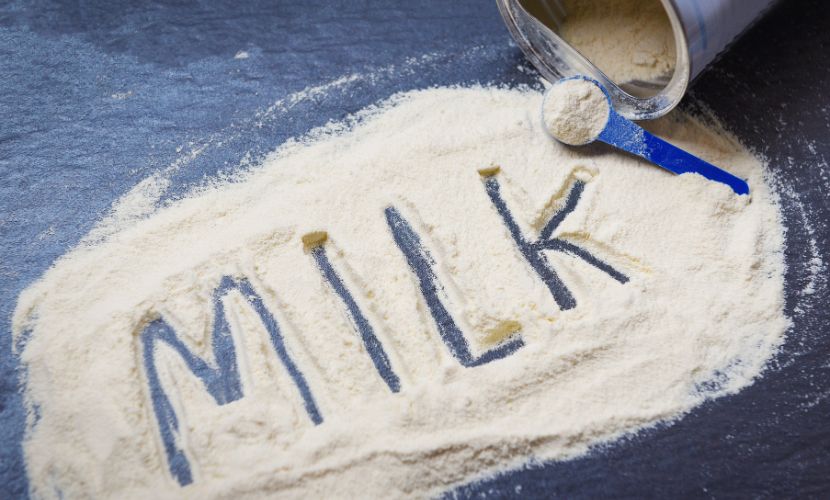Milk Powder Market Size, Share | Growth Forecast 2032
Milk Powder Market Overview
The global milk powder market has witnessed steady growth due to its extended shelf life, ease of transportation, and widespread use across various industries. Milk powder, derived by evaporating milk to dryness, retains its nutrients, making it an ideal alternative to fresh milk. It is commonly used in confectionery, bakery, infant food, and dairy-based products. Rising demand for convenient and nutritious food products and increasing applications in the food and beverage sector have driven the market’s growth. The forecast period of 2024-2032 is expected to see further expansion, supported by global population growth and urbanization.
Milk Powder Market Size
The milk powder market expanded at a compound annual growth rate (CAGR) of 3.8% during the period 2018-2023, showing consistent demand across both developed and emerging markets. In 2023, the global milk powder market reached an approximate value of USD 32 billion. Looking ahead, the market is projected to experience healthy growth during 2024-2032 due to rising consumption of dairy products, expanding product applications, and increasing demand in regions like Asia-Pacific and the Middle East. The market is expected to reach around USD 42 billion by 2032, driven by economic development and lifestyle changes.
Milk Powder Market Share
Asia-Pacific holds the largest market share in the global milk powder market, driven by rapid population growth, rising disposable incomes, and an increasing preference for dairy products. Countries like China and India lead in consumption due to their large populations and increasing awareness of the nutritional benefits of milk powder. North America and Europe also hold significant shares, owing to the widespread usage of milk powder in processed foods and infant formula. Key market players such as Nestlé, Danone, and Fonterra contribute to a significant portion of the market, strengthening their presence through product innovation and expanding distribution networks.
Milk Powder Market Trends
Several key trends are shaping the milk powder market. One of the most prominent is the rising demand for infant formula and nutritional supplements, particularly in Asia-Pacific. Additionally, the increasing popularity of organic milk powder, driven by growing health consciousness and preferences for clean-label products, is boosting market demand. Lactose-free and fortified milk powders, catering to consumers with specific dietary needs, are also gaining traction. Technological advancements in processing techniques have led to improved product quality, including enhanced taste and solubility, further driving consumption across various sectors such as bakery, confectionery, and beverages.
Milk Powder Market Analysis
The milk powder market is characterized by its widespread applications across industries such as bakery, confectionery, infant nutrition, and dairy products. The market is divided into various types of milk powder including whole milk powder, skimmed milk powder, and dairy-based ingredients. With consumers increasingly seeking nutritious and shelf-stable food products, milk powder has gained popularity due to its ease of use, long shelf life, and nutritional value. The rise in demand from developing economies, particularly in Asia-Pacific, has contributed significantly to market growth. Additionally, product innovations and advancements in processing technologies have enhanced the efficiency and quality of milk powder, leading to increased consumer acceptance. The growing trend towards organic and fortified milk powder variants is also expected to drive demand. However, the market faces challenges such as fluctuations in raw material prices and stringent government regulations on food safety and quality standards, particularly in developed regions like North America and Europe.
Milk Powder Market Segmentation
- By Type:
- Whole Milk Powder
- Skimmed Milk Powder
- Dairy-Based Ingredients
- Others
- By Application:
- Infant Formula
- Bakery & Confectionery
- Dairy Products
- Nutritional Supplements
- Others
- By Distribution Channel:
- Supermarkets and Hypermarkets
- Convenience Stores
- Online Retailers
- Specialty Stores
- By End-User:
- Food & Beverage Industry
- Dairy Industry
- Pharmaceutical Industry
- Household Consumers
- By Region:
- North America
- Europe
- Asia-Pacific
- Latin America
- Middle East & Africa
These segments highlight the diverse applications and types of milk powder, which cater to the growing demand across multiple sectors globally.
Get a Free Sample Report with Table of Contents
Milk Powder Market Growth
The global milk powder market is expected to grow at a healthy rate during the forecast period of 2024-2032. Factors driving this growth include rising population, increasing demand for dairy-based products, and advancements in milk powder processing techniques. The Asia-Pacific region, especially China and India, is expected to contribute significantly to the market’s expansion due to rising disposable incomes and changing dietary preferences. Additionally, the increasing use of milk powder in infant formula, nutritional supplements, and functional foods is likely to further boost the market. Growth opportunities also lie in the organic and lactose-free milk powder segments.
Recent Developments and Challenges in the Milk Powder Market
Recent developments in the milk powder market include product innovations, such as the introduction of organic and fortified milk powders to cater to health-conscious consumers. Companies are focusing on expanding their product lines and increasing production efficiency through technological advancements in drying processes. The growing demand for infant formula, especially in Asia-Pacific, has also led to capacity expansions and strategic partnerships among key players. However, the market faces challenges such as volatile raw material prices, including fluctuations in milk prices due to changing weather patterns and feed costs. Regulatory restrictions related to food safety, particularly in Europe and North America, pose additional hurdles for manufacturers. Moreover, environmental concerns over the carbon footprint of milk production are pressuring companies to adopt sustainable practices.
Key Players in the Milk Powder Market
- Nestlé S.A.: A leading global food and beverage company, Nestlé is a dominant player in the milk powder market, offering a wide range of products, including infant formula and dairy-based ingredients.
- Danone S.A.: This French multinational is a key player in the dairy sector, focusing on infant nutrition, medical nutrition, and specialized dairy products.
- Fonterra Co-operative Group Limited: A New Zealand-based dairy co-operative, Fonterra is one of the world’s largest producers of milk powder, supplying ingredients to global food companies.
- Royal FrieslandCampina N.V.: This Dutch multinational offers a broad range of dairy products, including milk powder for infant formula, food, and beverages, contributing significantly to the global market.
- Saputo Inc.: A Canadian dairy company, Saputo provides milk powder solutions for the foodservice, retail, and industrial sectors, with a strong focus on expanding its market reach.
- Arla Foods Amba: A European dairy cooperative, Arla Foods is known for its high-quality milk powder products used in various food applications, including bakery, confectionery, and infant formula.
- Others: Various regional players and emerging companies are also contributing to the market by offering innovative milk powder solutions and expanding their presence in developing markets.





Post Comment